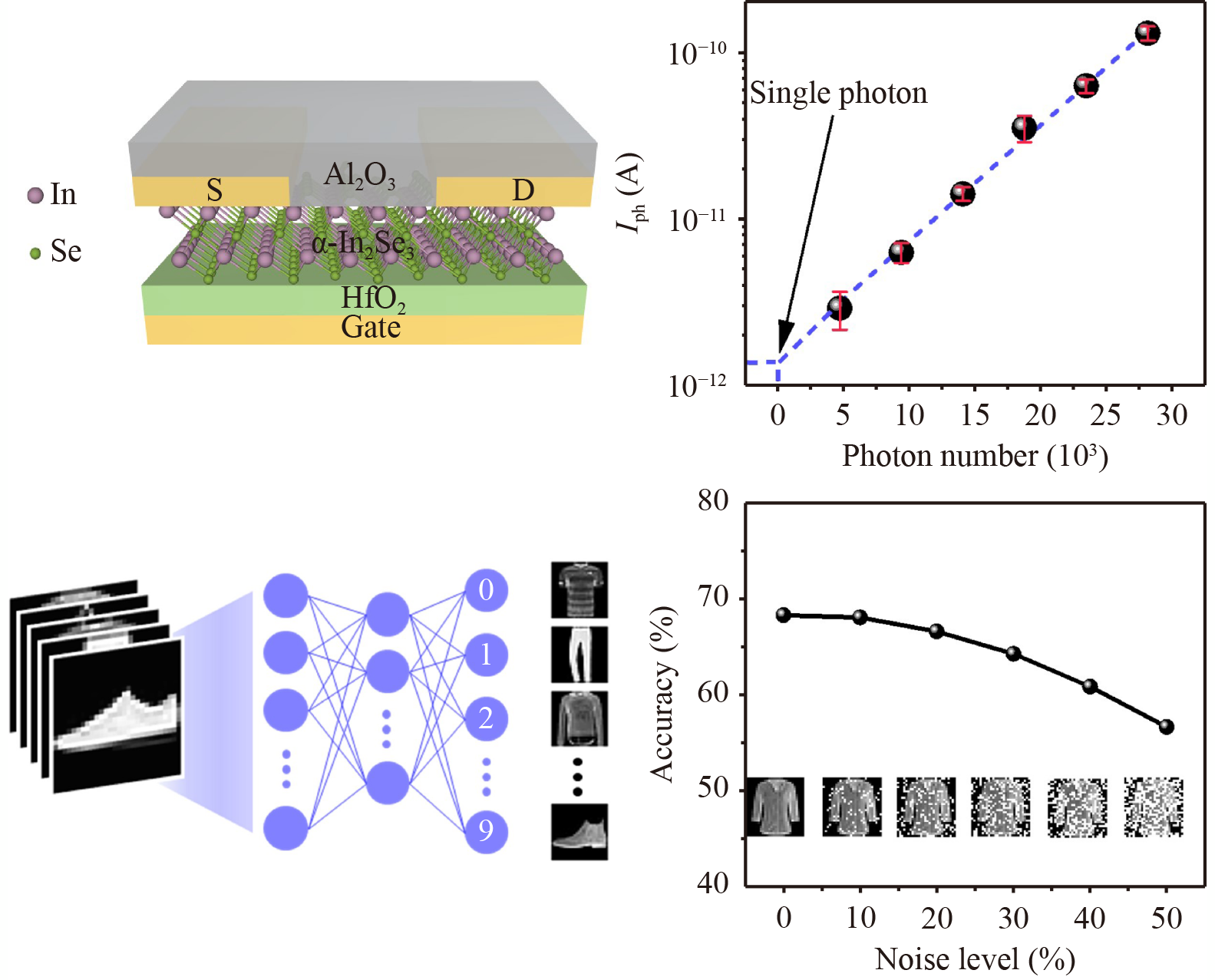As a ferroelectric semiconductor, α-In
2Se
3 shows two unusual features. The first is that its conductance states are strongly correlated with the ferroelectric polarization directions. Due to the accumulation/depletion of electrons at the α-In
2Se
3/gate dielectric interface, transistors based on α-In
2Se
3 have a nonvolatile low-resistance/high-resistance state (LRS/HRS) for ferroelectric polarization down/up state [
53]. The second is that, because of the suitable bandgap and the existence of an imprint effect, light can flip the ferroelectricity of α-In
2Se
3 into a polarization down state, hence a nonvolatile LRS [
29,
54,
55]. A brief band diagram analysis can be seen in Supplementary Fig. S4. In total, the conductance of the α-In
2Se
3 phototransistor can be repeatedly switched by electricity and light. This can be seen from the temporal response of an α-In
2Se
3 phototransistor to electrical and optical pulses as shown in Fig.1(d). The phototransistor was initially at an LRS with a large drain current of 0.11 μA. Then, an 8 V gate pulse (
VGS) was applied at 1−2 s, setting the phototransistor into a polarization-up state and HRS. And a following −9 V gate pulse at 3−4 s can set it back to a polarization down state and LRS. Similar conductance switching can be also observed using electrical and UV light pulses, where an LRS can be achieved after being applied a 275 nm UV light pulse at 7−8 s. A retention time of over 10000 s can be achieved both at LRS and HRS (see Supplementary Fig. S5).






